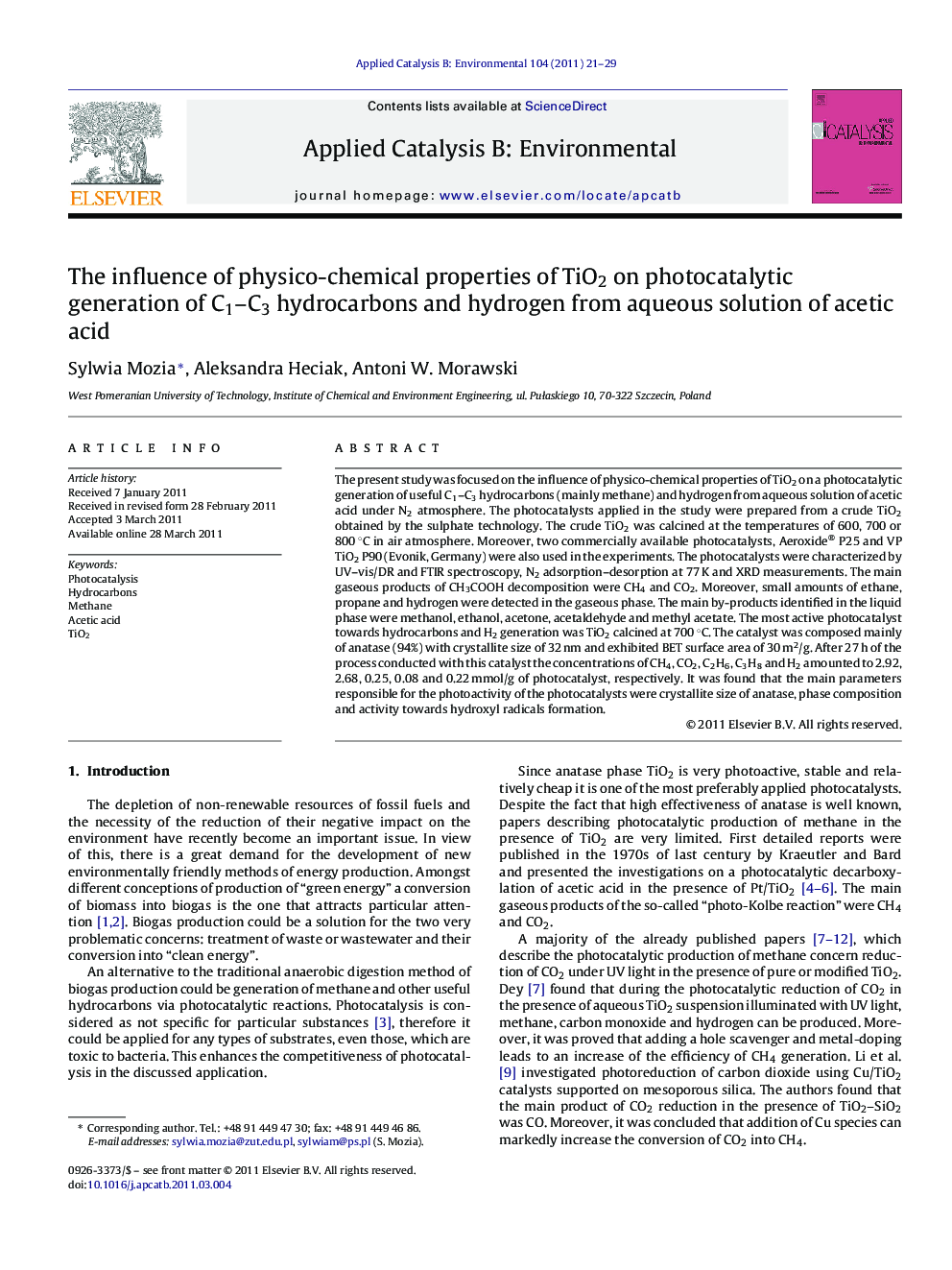| کد مقاله | کد نشریه | سال انتشار | مقاله انگلیسی | نسخه تمام متن |
|---|---|---|---|---|
| 46824 | 46450 | 2011 | 9 صفحه PDF | دانلود رایگان |

The present study was focused on the influence of physico-chemical properties of TiO2 on a photocatalytic generation of useful C1–C3 hydrocarbons (mainly methane) and hydrogen from aqueous solution of acetic acid under N2 atmosphere. The photocatalysts applied in the study were prepared from a crude TiO2 obtained by the sulphate technology. The crude TiO2 was calcined at the temperatures of 600, 700 or 800 °C in air atmosphere. Moreover, two commercially available photocatalysts, Aeroxide® P25 and VP TiO2 P90 (Evonik, Germany) were also used in the experiments. The photocatalysts were characterized by UV–vis/DR and FTIR spectroscopy, N2 adsorption–desorption at 77 K and XRD measurements. The main gaseous products of CH3COOH decomposition were CH4 and CO2. Moreover, small amounts of ethane, propane and hydrogen were detected in the gaseous phase. The main by-products identified in the liquid phase were methanol, ethanol, acetone, acetaldehyde and methyl acetate. The most active photocatalyst towards hydrocarbons and H2 generation was TiO2 calcined at 700 °C. The catalyst was composed mainly of anatase (94%) with crystallite size of 32 nm and exhibited BET surface area of 30 m2/g. After 27 h of the process conducted with this catalyst the concentrations of CH4, CO2, C2H6, C3H8 and H2 amounted to 2.92, 2.68, 0.25, 0.08 and 0.22 mmol/g of photocatalyst, respectively. It was found that the main parameters responsible for the photoactivity of the photocatalysts were crystallite size of anatase, phase composition and activity towards hydroxyl radicals formation.
.Figure optionsDownload as PowerPoint slideHighlights
► The gaseous products of photocatalytic decomposition of CH3COOH were CH4, CO2, C2H6, C3H8 and H2.
► The most active photocatalyst was P700 obtained by calcination of crude TiO2 at 700 °C in air.
► Ratio CH4/CO2 < 1 was due to mineralization of CH3COOH to H2O and CO2 in which OH radicals were involved.
► Crucial TiO2 parameters were phase composition, crystallite size and activity for OH radicals formation.
Journal: Applied Catalysis B: Environmental - Volume 104, Issues 1–2, 27 April 2011, Pages 21–29